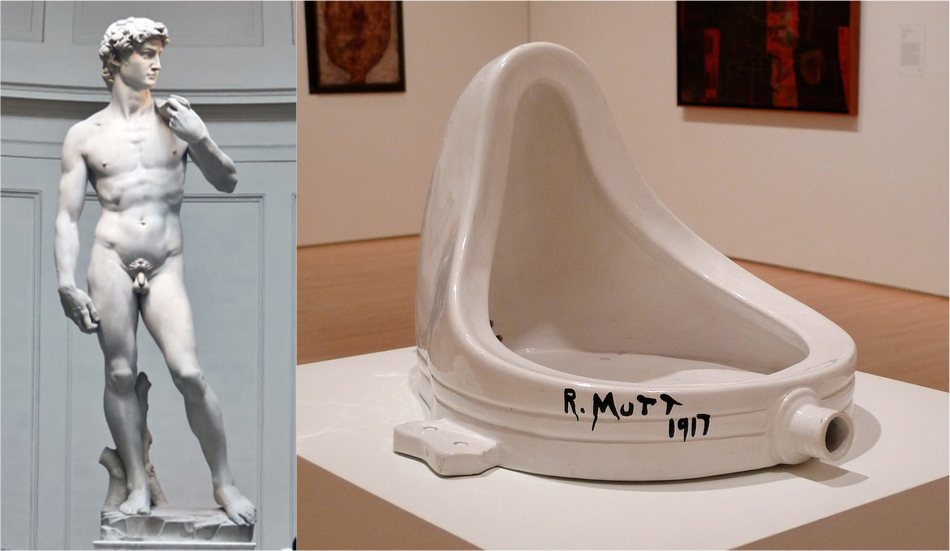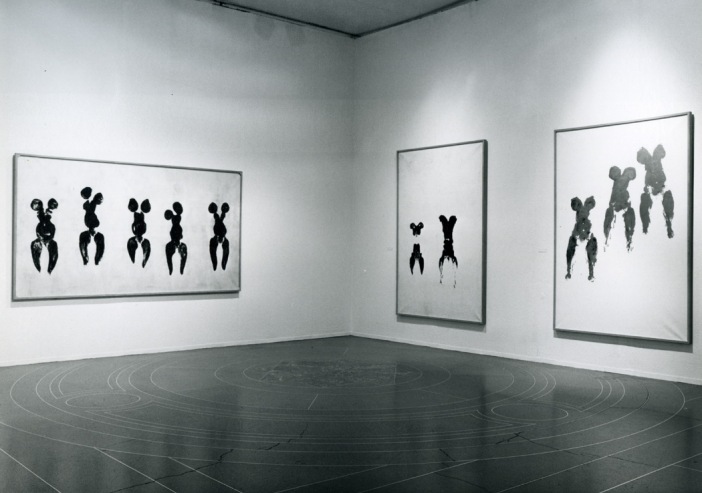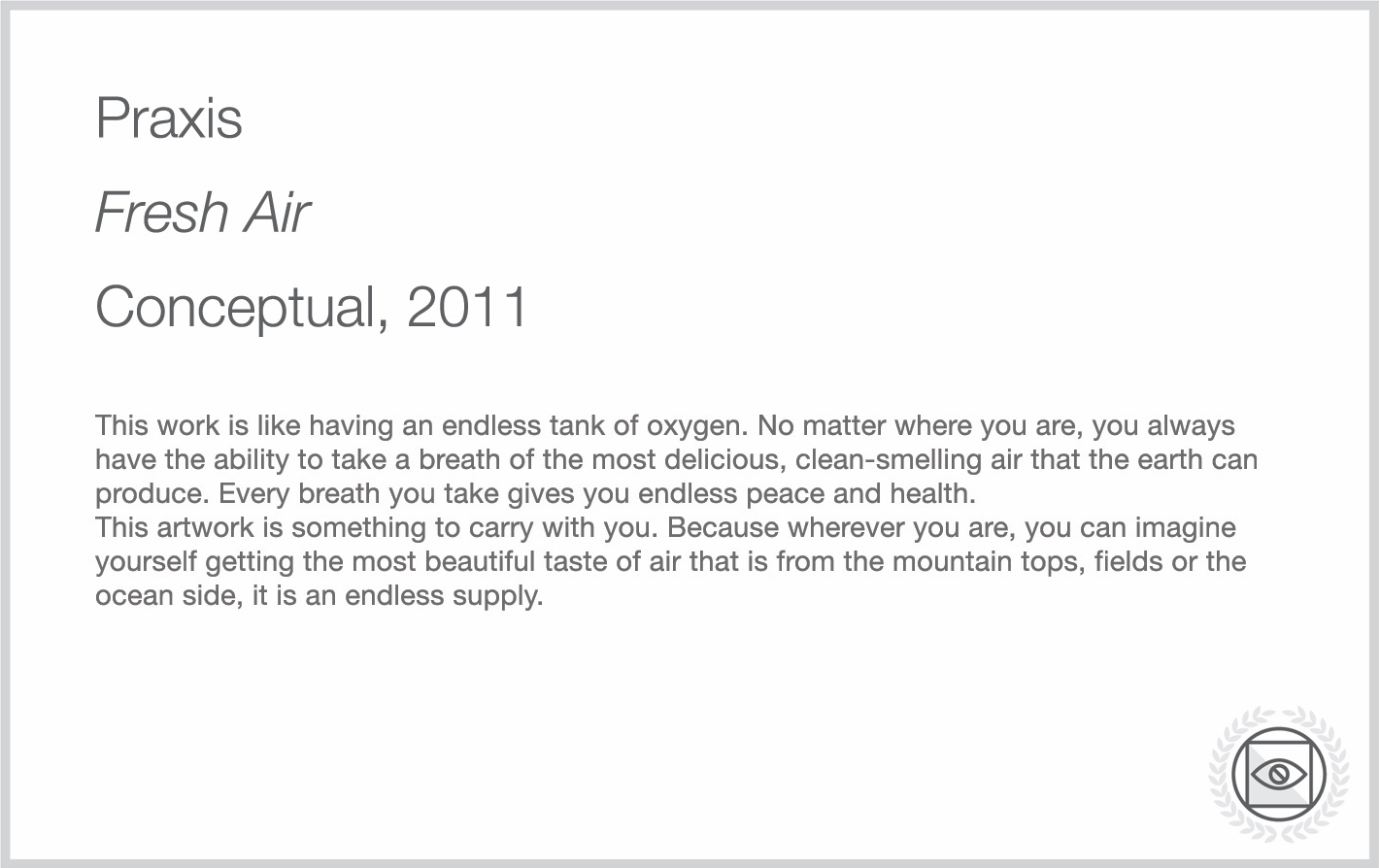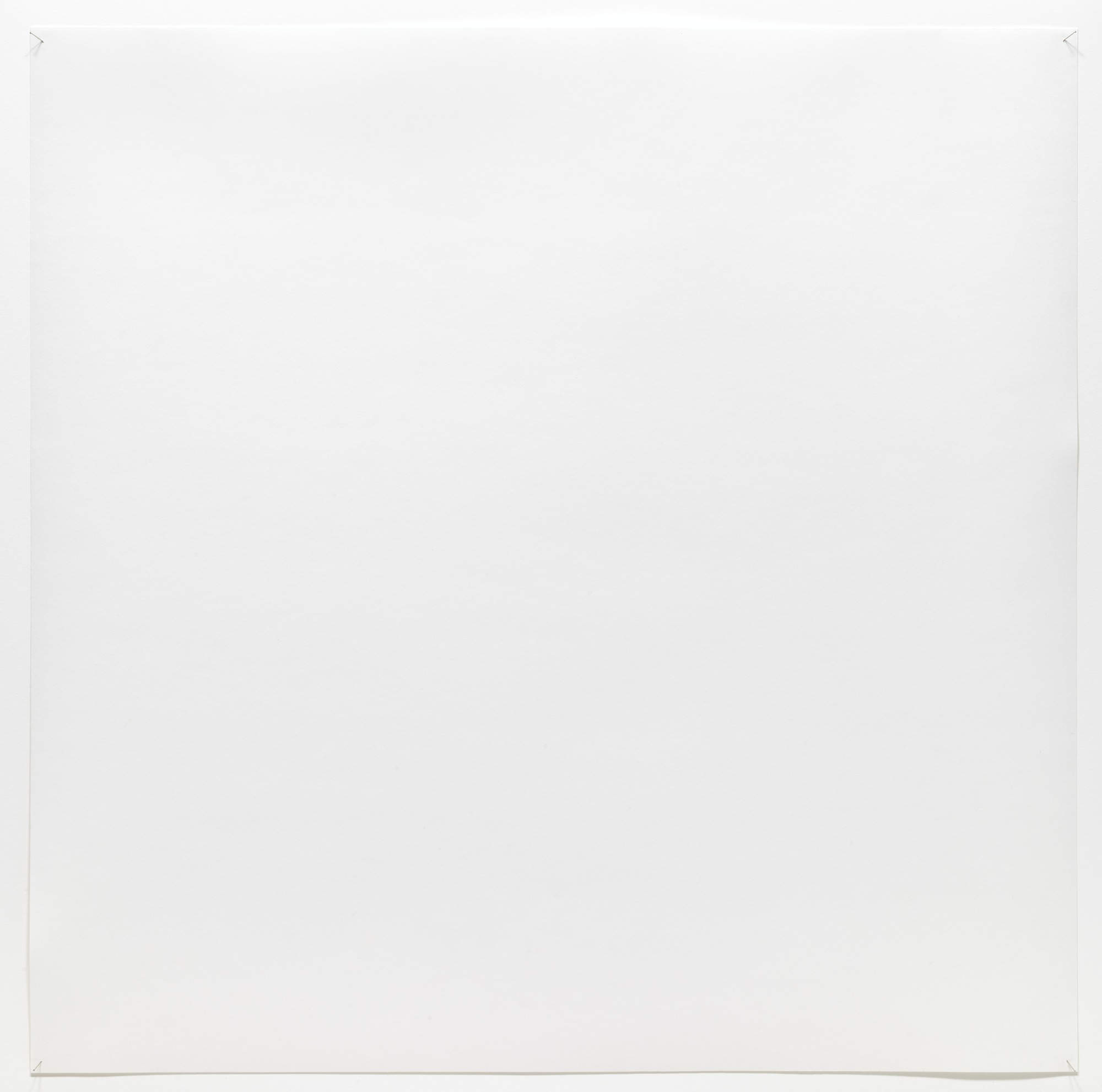

fArtism may, at first blush, seem little more than a sophomoric prank, a joke played on a juvenile pun. But fArtism is emblematic of a modern Art world that can only be described as farcical.
For millennia, Art spoke to people through imagery, iconography, and references to broad themes. But, beginning in the mid-19th century, these conventions began to break down. A group of painters called the Impressionists started using then-radical techniques to depict reality rather than interpret it, alienating themselves from the Art establishment but eventually replacing it. The Modernists embraced this defiant approach and took it a step further. They explored the human condition in provocatively minimal ways, ironically recalling primitive works in their effort to move Art forward.
Cubism, Surrealism, and Dadaism continued in Modernism's wake, struggling to make sense of brave new worlds — the atomic age, the space age, the Cold War. In an ever-changing and unstable world, Art became a moving target. Postmodernists went further still, metaphorically throwing mud on the walls of the salons and calling it Art. No one could dictate what Art was, for beauty was in the eye of the beholder. Warhol turned ads into Art; even he knew it was absurd. But the Art world soon embraced this rebellious approach. In time, even the most prestigious institutions in the world agreed: anything at all could be Art.
fArtism began in this time of creative chaos. The first prominent work o' fArt was arguably Marcel Duchamp's Fountain, an ordinary urinal that he signed with the pseudonym "R. MUTT". This seeming adolescent prank is now widely considered one of the most important works of modern Art ever; copies of it are displayed in the most renowned modern Art museums around the world.

Today, fArtism is one of the most prominent movements in modern Art, and it shows no sign of slowing down. Please see the gallery for examples of works o' fArt and the juxtaposition gallery for contrasts between works of Art and works o' fArt.
fArtism is a cultural movement that emerged in the early 20th century and continues through the present day. It involves the creation of works o' fArt, which require no special skill to create and have no inherent meaning. fArtism is a cultural rather than artistic movement because works o' fArt are not works of Art. Devoid of all skill and meaning, they make a farce of Art.
Take Robert Ryman's Untitled, a work o' fArt on display in the San Francisco Museum of Modern Art, one of the most prestigious modern Art museums in the world.

This small white square is one of thousands of all-white paintings Ryman has made for the better part of his 60-year career. One of Ryman's somewhat larger versions sold for $20.6 million in 2015. Art critic for The New Yorker Peter Schjeldahl writes, "Ryman is rooted in a phase of artistic sensibility that was coincident with early minimalism and Pop, and is still in need of a name." We have just the name for it: fArtism.
Some movements are started deliberately, and others materialize organically from uncoordinated actions. fArtism appears to be in the latter category. Early fArtists like Ryman were likely unaware that they were producing works o' fArt. All indications are that these fArtists — and the Art community that supported them — ardently believed in the significance and legitimacy of their works. Indeed, even today, no one openly identifies as a fArtist, and no museum openly exhibits works o' fArt.
Yet some works o' fArt are so extravagantly bizarre and pointless as to call that perspective into question. Ryman's empty paintings are about as traditional as works o' fArt come. Consider, instead, the work of Yves Klein, who is widely regarded as a pivotal figure in Minimalism and Performance Art. Klein created his Anthropométries by hiring female models to be "living paintbrushes" by stripping naked, covering themselves in blue paint, and rolling around on pieces of paper on the floor and walls. He invited an audience, dressed in black-tie attire, to watch the event while he conducted an orchestra playing his "Monotone Symphony", which consists of 20 minutes of a single note followed by 20 minutes of silence. London's Tate Modern, which exhibited the resulting works, provides a video of the event.

Art critic of The New York Times Roberta Smith writes, "in the nearly five decades since Klein died of a heart attack at 34, miles of print have been devoted to demystifying, deconstructing and generally letting the air out of the myth of the artist as genius." fArtism lets the air out just a bit more. Rafael and Piscasso were surely geniuses but, honestly, were Ryman and Klein?
The Art world is finding meaning where it isn't. Critics, dealers, and institutions are exalting the ridiculous and making the meaningless avant-garde. Whether knowingly or not, they are making a farce of Art. Across the globe, museums and collectors are spending exorbitant sums on what even experts could mistake for worthless objects.
Sometimes, they're paying for nothing at all. The Centre Pompidou in Paris, long renowned for defying convention, defied common sense when it held an exhibition of nothing in 2009. It presented nine empty rooms with white-washed walls displaying... nothing. The exhibition celebrated 50 years of invisible and silent works, including recreations of British Art collective Art and Language's The Air Conditioning Show (a room filled with air-conditioned air) and John Cage's musical composition 4'33" (in which the performers do nothing for 4 minutes and 33 seconds). The exhibition also recreated one of Yves Klein's most famous works, an empty gallery he called The Specialization of Sensibility in the Raw Material State of Stabilized Pictorial Sensibility (or simply The Void, for short). As with any other Pompidou exhibition, museum guards stood at constant watch. Perhaps they were to prevent visitors from making Art on the walls?
One wonders, are these so-called "Artists" just con artists? Are these works o' fArt among the greatest heists in modern times? And are the critics, dealers, and institutions who laud their genius their victims or co-conspirators? We may never know.
As if to outdo the Centre Pompidou, the Art collaborative Praxis worked with Manhattan curator Vallejo Gantner and actor James Franco to create the Museum of Non-Visible Art. The museum's manifesto — a sprawling, cryptic poem of sorts — includes lines such as "Art itself is nothing" and "The viewing of art should not require eyes." Through a crowdfunding campaign, they managed to raise $16,197 from 164 backers. The museum's founders reminded their backers that they would not receive a physical work of Art. Instead, they would receive "a title card with a description of a piece of art, as well as a letter of authentication". The backers could then mount the card on a wall of their choosing and even sell the "non-visible" work. Within about a month, one woman paid $10,000 for one of the museum's pieces.

This kind of borderline practical joke "Art" has been mainstream for decades. Yves Klein famously sold collectors chunks of air — which he called "invisible pictorial sensibility" — converted the purchase price into gold leaf, and dumped it into the Seine while the collectors watched. (He gave the collectors purchase receipts, which he then had them burn.) The San Francisco Museum of Modern Art houses Tom Friedman's 1997 work 1000 Hours of Staring, a square piece of white paper he (claims to have) stared at for 1000 hours. Much stranger than these works o' fArt themselves, though, is that the Art world seems to take them entirely seriously.

Has fArtism murdered Art? In purporting to make Art out of anything, it seems to have made Art into nothing. Where once humanity was graced by exquisite Chinese ceramics and magnificent Renaissance frescoes, today we are left with gimmickry masquerading as creative accomplishment. Are we languishing in Postmortemism, waiting for Art's rebirth?
If fArtism murdered Art, it was a silent killer. fArtism has so far gone unnoticed and unnamed. It has seeped into every major modern Art museum around the word, enchanting the Art world even while repulsing everyone else. This website puts a name on the movement and "outs" fArtists around the world who have so far been considered Artists. It confronts the unwarranted seriousness of modern Art with whimsical mockery.
Yet Art is certainly not dead, only derelict. It lives on — indeed it thrives — outside the ivory towers of the Art world. All over the globe, people are creating beautiful and insightful pieces that enrich our lives just as the works of the old masters did. These works of Art, not works o' fArt, should fill our museums and galleries.
fArtism of the future can revive Art. As the typography indicates, it can be a function of Art, not just a farce of it. fArtism of the past may have been accidental, but fArtism of the future can be intentional. fArtists of the past may have unwittingly made a farce of Art, but fArtists of the future can do so deliberately: they can embrace purposeful pointlessness to expose the crisis of skill and meaning in modern Art. The Art world needs only a whiff to wake up.
The International fArtism Contest will honor the first fArtist to "fArt" in a major modern Art museum, i.e. the first person to convince such a museum to exhibit their work o' fArt, considering it to be a work of Art.
To be eligible, the fArtist must submit a letter of intention to contact@fartism.org prior to the exhibition of their work, establishing that their intention is farcical. In addition, their work must conform to the definition of a work o' fArt above. Complexity and cleverness are strongly discouraged. Remember, the best works o' fArt could have been created by anyone and mean nothing at all!
The following qualify as major modern Art museums:
Centre Georges Pompidou (Paris, France)
Hamburger Kunsthalle (Hamburg, Germany)
Museum of Contemporary Art (Sydney, Australia)
Museum of Modern Art (New York, United States)
Museum of Modern Art (San Francisco, United States)
Stedelijk Museum (Amsterdam, Netherlands)
Stedelijk Museum voor Actuele Kunst (Ghent, Belgium)
Tate Modern (London, United Kingdom)
We welcome petitions to add to this list (email us at contact@fartism.org). If we add any museums, we'll indicate above the date on and after which contest entries involving those museums will be eligible.
Winning this contest would be a monumental achievement, deserving of an enormous cash prize. Although we alone cannot fund such a prize, we hope that together we all can. We've seeded the prize with $1,000 to help catalyze fArtism as a movement and support the participants in the contest. Please consider contributing! Every great creator needs a patron: Michelangelo had the Medicis, and our contest winner could have you.
The winner of the International fArtism Contest will receive the total prize amount at the time of their victory. If no one wins the contest by 2067 (a preposterous 50 years after the launch of the contest), the prize money will be converted into gold leaf and dumped into the Seine (à la Yves Klein). The qualifying museums listed above will receive congratulatory certificates (which we will encourage them to burn) for exhibiting unexpected restraint.
The contest submission period begins on September 1, 2017. The current prize amount is:
$1,001
Note that the prize amount does not update in real time, but we do update it regularly to reflect new contributions.
All judgments as to the eligibility of entries and whether a work conforms to the definition of a work o' fArt will be made by the founders of fArtism.org. Please see the official rules for details (official rules will be available soon).
Much of modern Art is a farce. Not convinced? Check out the examples below.
We proudly support fArtists worldwide. Like the great Renaissance salons of France, we exhibit great works o' fArt so that all can appreciate their genius (or lack thereof).
Please also enjoy our juxtaposition gallery, which contrasts works of Art with works o' fArt:
We welcome your nominations for these galleries (email us at contact@fartism.org). Remember the two basic qualities of a work o' fArt: it (1) requires no special skill to create and (2) has no inherent meaning (see the full definition above). Also, remember that most works o' fArt are masquerading as works of Art, so don't be afraid to nominate famous, critically acclaimed works.
fArtism is not just the purview of famous museums. You can purchase an exquisite work o' fArt for exhibition in your own home. Untitled by Anonymous is the essence of fArtism in a single, blank white canvas. This 45.7 x 61.0 cm masterpiece can be displayed on any standard wall surface and comes with a standard museum label with information about the fArtist and work.
